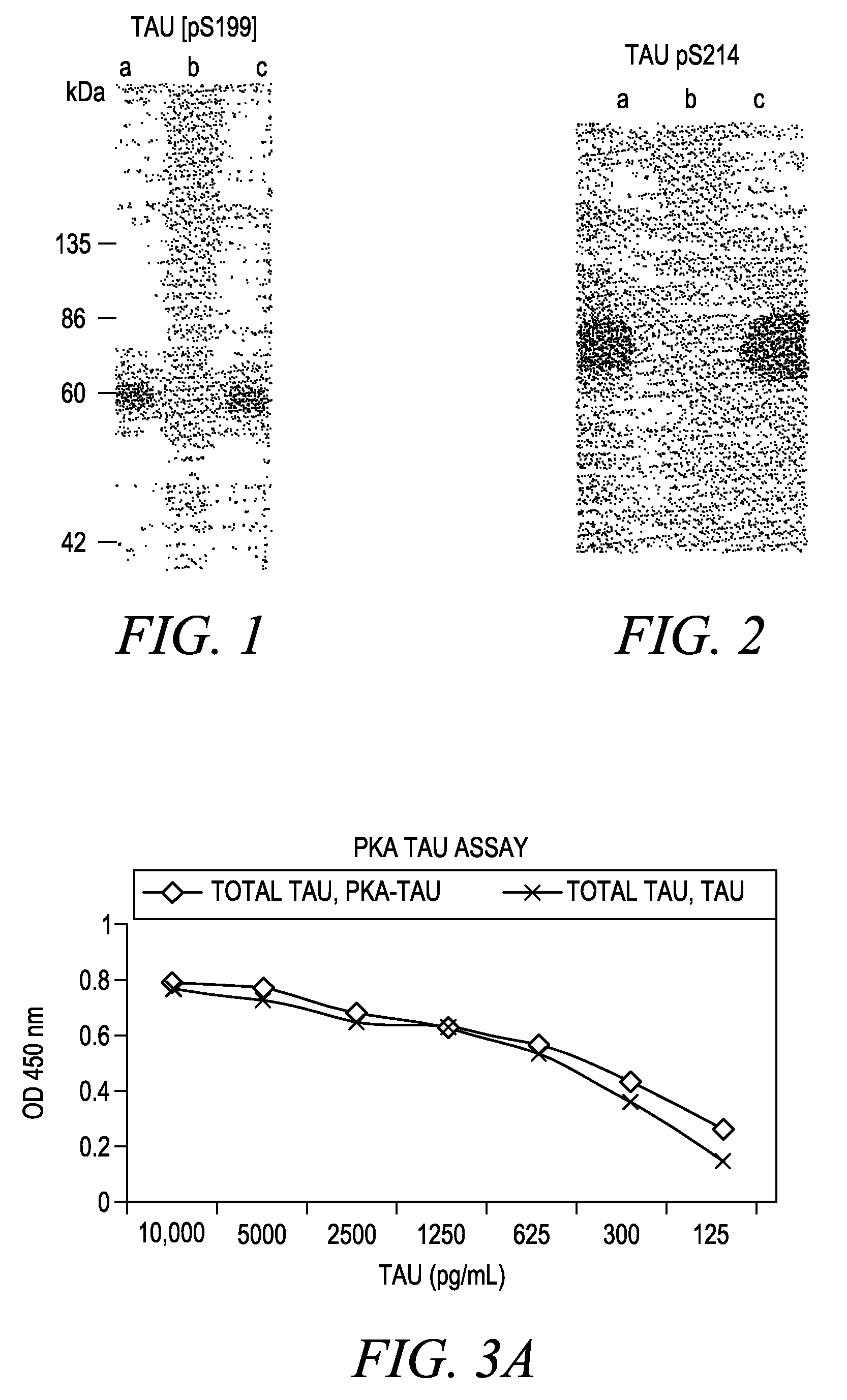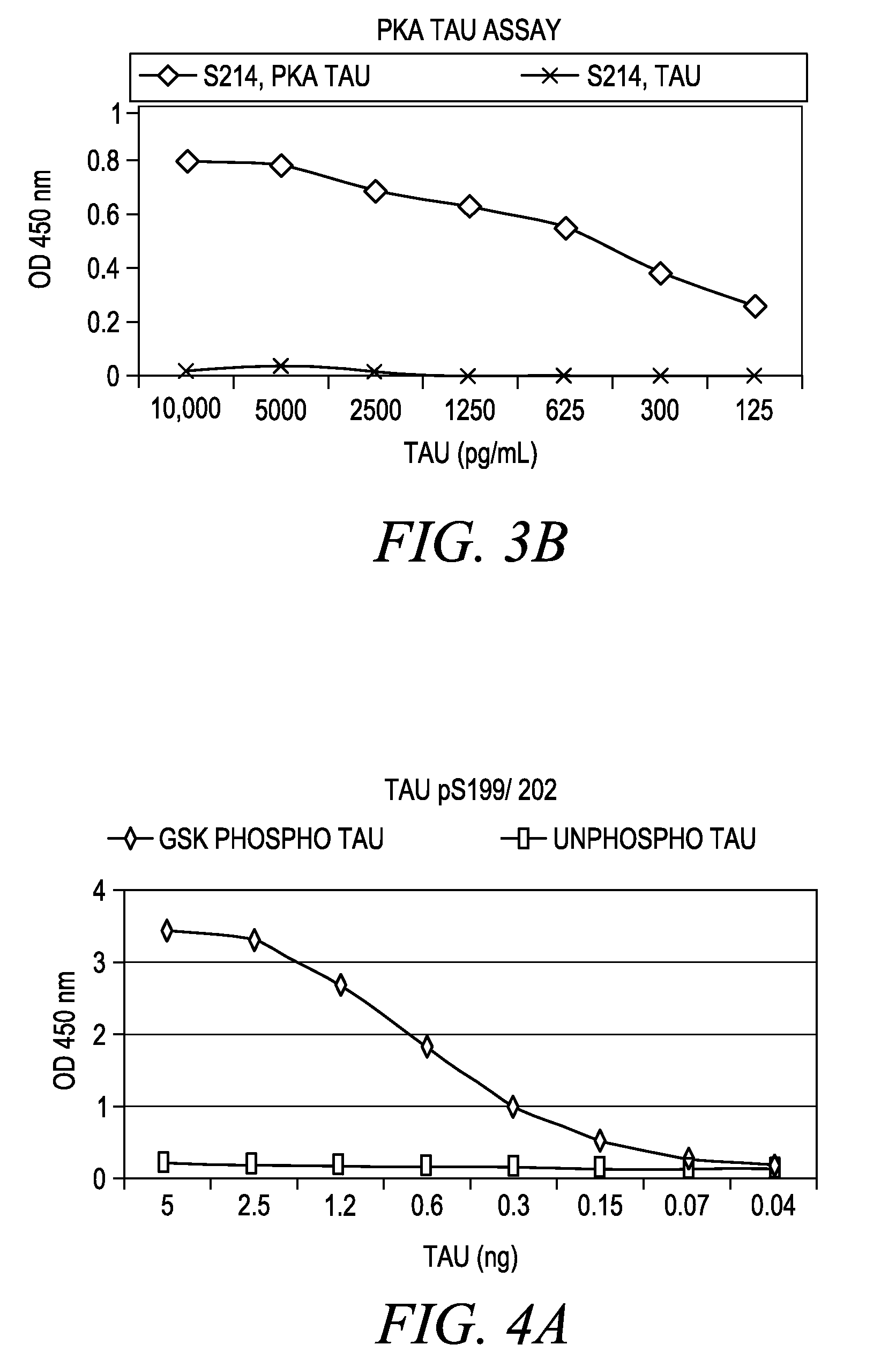Method for quantifying phosphokinase activity on proteins
a phosphokinase and protein technology, applied in the field of protein kinase activity measurement methods, can solve the problems of inability to discriminate among phosphorylated tyrosine residues on a molecule, inability to detect and method does not address phospho-serine or phosphothreonine events
- Summary
- Abstract
- Description
- Claims
- Application Information
AI Technical Summary
Benefits of technology
Problems solved by technology
Method used
Image
Examples
Embodiment Construction
[0037]Tau System: The Tau protein system demonstrates the utility of this invention on a protein that is found both intracellularly and extracellularly in normal and pathological conditions. The Tau protein has multiple phosphorylation sites acted upon by multiple protein kinases. Phosphoserine and phosphotyrosine residues exist. Both mono-phospho and dualphosphoresidues are distinguishable in this model system.
Tau Recombinant Protein: Full length Tau-441 protein is purified recombinant protein derived through cloning of human Tau cDNA and expressed in E. coli. The protein is purified via standard methods. This protein is commercially available from multiple vendors.
Tau pS199 PSSA: Rabbits were immunized with a chemically synthesized and KLH conjugated phosphopeptide corresponding to the region of the longest isoform of the Tan protein that includes serine 199. The chemically synthesized phosphopeptides (RSGYS (pS) PGSPG) is sequence ID #I. The Tau pS199 PSSA was purified from rabbi...
PUM
| Property | Measurement | Unit |
|---|---|---|
| concentrations | aaaaa | aaaaa |
| concentrations | aaaaa | aaaaa |
| pH | aaaaa | aaaaa |
Abstract
Description
Claims
Application Information
 Login to View More
Login to View More - R&D
- Intellectual Property
- Life Sciences
- Materials
- Tech Scout
- Unparalleled Data Quality
- Higher Quality Content
- 60% Fewer Hallucinations
Browse by: Latest US Patents, China's latest patents, Technical Efficacy Thesaurus, Application Domain, Technology Topic, Popular Technical Reports.
© 2025 PatSnap. All rights reserved.Legal|Privacy policy|Modern Slavery Act Transparency Statement|Sitemap|About US| Contact US: help@patsnap.com



